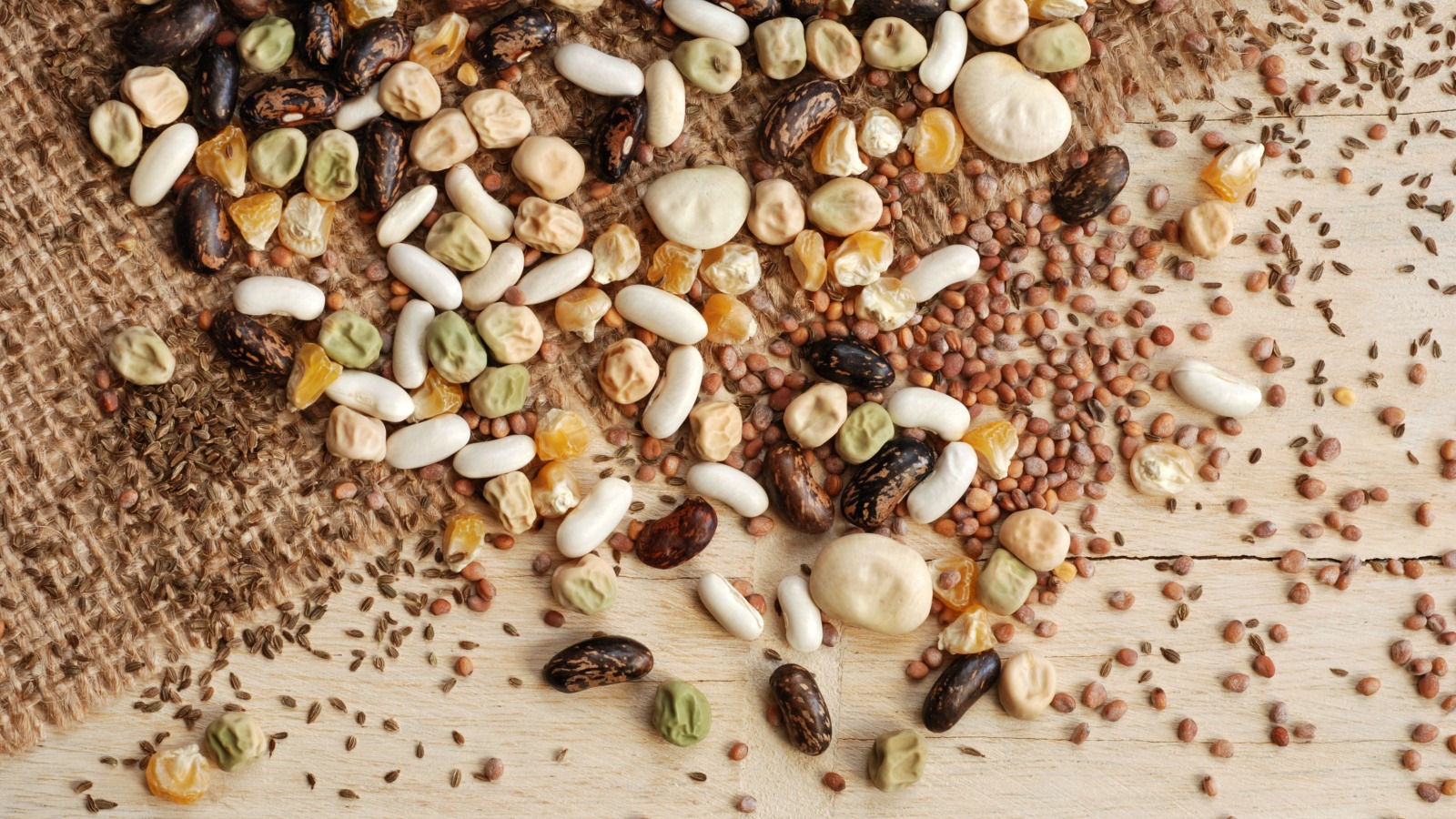Flipping through seed catalogs in the gray dead of winter, whether or not you’re a gardener, feels a little like tumbling from black-and-white Kansas into Oz. With their colorful, glossy spreads of photographs they’re like gardening magazines on steroids — a collager’s dream. And individual seed packets are the same: Dewy tomatoes blush for their closeups. Both can be a major source of inspiration for gardeners of all types: backyard, windowsill, flower, vegetable, experienced, newbie.
But if you’ve never planted much of anything before, reading the information on a seed packet or in a seed catalog — and making sense of it — can be a little intimidating. So I asked Ken Greene, founder of the Hudson Valley Seed Library, for some tips for anyone planning a garden and wondering where to begin.

Seed packets from the Hudson Valley Seed Library.Food52 / James Ransom
What is a seed catalog? What do I do with it?
Just like any catalog, seed catalogs list seeds for purchase alongside photographs of the fully grown plants. They also include important information that can help you pick the right seeds for your garden. This includes what kinds of seeds you’re buying (organic, hybrid, heirloom, open pollinating — more on these terms later), what kind of soil and how much sunlight the seeds will need to grow, and the number of days it will take for the plant to reach maturity.
Use catalogs as a source of inspiration, by all means, but “pay attention and have a deep understanding of what you’re buying when you’re buying those seeds,” Ken says. Keep in mind that every garden (and every planting season) will be a little bit different, and the kinds of seeds you buy will impact how your garden grows.
You can order many seed catalogs for free (!!!) online. Here are a few recommendations.
What kinds of seeds should I look for?
The catalog or seed packet should notate that your seed is one or some of the following:
- Organic: Organic seeds were grown and produced using certified organic practices. “This also means they’re not genetically engineered,” Ken says, “but it doesn’t mean they’re an heirloom, hybrid, or open pollinated.”
- Heirloom: Heirloom seeds come from very old plant varieties. They’re not the same as organic. “You can grow heirloom seeds using chemical practices. It’s still an heirloom,” Ken explains.
- Hybrid: “A hybrid is a variety developed by a company or breeder that’s a first-generation cross between two parent plants,” chosen for their desirable qualities, said Ken. (Think back to your high school biology class and Mendelian genetics.)
- Open pollinator: These seeds are important for people who want to save their seeds to plant year after year: Open pollinators “will grow the same plant: same size, same flavor” generation after generation.
So what to choose? That depends, says Ken. “Do you want seeds with a story?” Choose heirloom. “Seeds that ripen all at once” instead of seeds that ripen gradually throughout the season? Choose hybrids. “To save your seeds?” Choose open pollinators.
Look for the “days to maturity” number and plan accordingly.
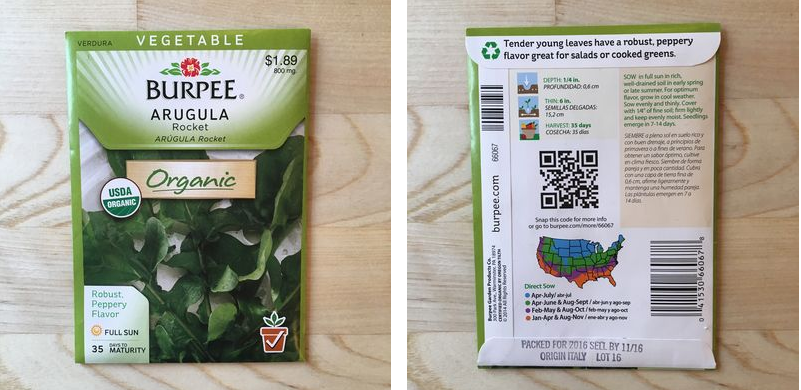
The “days to maturity” number is on the front, in the bottom left corner. On the back, more information — plus a link to find more information about this particular plant.Food52
“If you live in the Northeast like I do, no matter how good that description sounds, if that watermelon is 120 days ’til maturity, you probably won’t get a mature watermelon,” Ken says. “We don’t have that much time.” Remember: You have to wait to plant outside until you’re sure there won’t be another frost — or start your seeds indoors.
Luckily, you may be able to find another variety of watermelon (or whatever plant you’d like to grow) with a shorter growing period. Just consider how many days you really have in a growing season.
You can use the “days to maturity” number to plan for a full season — so all your plants don’t ripen at the same time, leaving you with a two-week tomato windfall and then nothing. Plant a variety of plants (for example, early-season tomatoes, mid-season tomatoes, and late-season tomatoes — or arugula, which you can generally plant twice in a season) to ensure a longer overall harvest. These arugula seeds are just 35 days until maturity — which means that you could be harvesting the beginnings of a salad in just about a month.
Determine what your “zone” is.
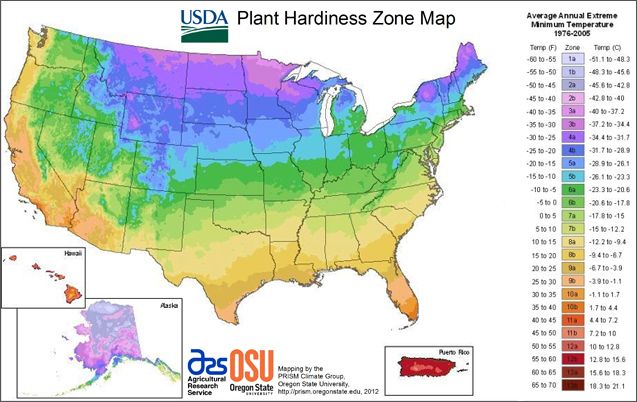
The USDA’s zone map. What’s your zone?USDA
See that little map on the backs of the seed packets? That’s a simple version of a zone map, and it will help tell you your region’s average temperature, plus when (and what) you should be planting accordingly. Many seed catalogs include versions of this map, based on the USDA’s Plant Hardiness Zone Map, above. Knowing your zone will help you choose seeds and plants that will grow happily within that zone.
Ken encourages gardeners to ask their extension agent or local master gardener — or even their neighbors who garden — for their input, since there are so many microclimates within zones.
Think about your yard’s (or your windowsill’s) soil and sunlight.

Direct sun from this window? Maybe!Food52
Different plants need different kinds of soil (dry! wet! clay! sandy!) and different amounts of sunlight (full, partial, or none). Luckily, seed catalogs and packets will usually indicate what a seed will prefer, especially if it’s picky. (Roses and blueberries, for example, tend to be fussy about the soil they will or won’t grow in.)
To find out more about your soil, look up your local extension agent and bring them a soil sample. They’ll be able to tell you exactly what kind of soil you have, and what will grow well in it.
To determine what kind of sun you have, think about the number of hours the spot you’d like to plant in (or the windowsill where you’ll put your pots) gets direct sunlight. More than 10 hours and you can grow pretty much anything, Ken says. A good rule of thumb for telling how much sun a plant will need: If it’s going to blossom and produce fruit (like tomatoes and squash), they need a lot of energy from the sun — so, full sun. Plants that need less sun are less likely to flower and fruit (like herbs, lettuces, and brassicas).
If you can’t or don’t want to start seeds indoors, choose “direct sow” seeds.
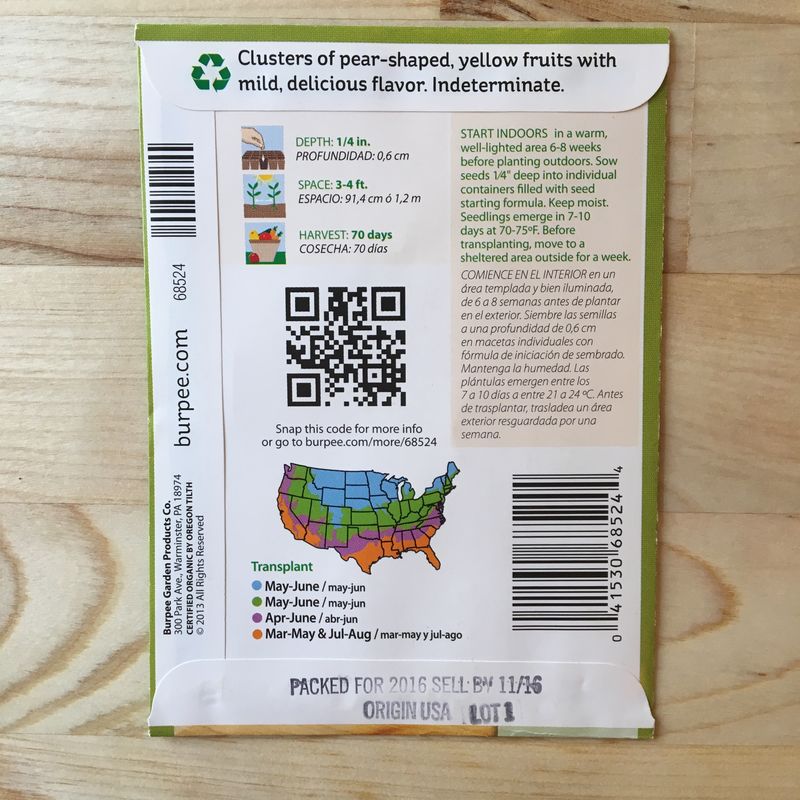
These “Yellow Pear” tomatoes need to be started indoors, then transplanted. The packet also instructs to plant the seeds a 1/4 inch deep, and the resulting seedlings three to four feet apart.Food52
That means you can put seeds directly in the ground (or pot) without having to wait for them to grow into seedlings indoors. Some plants, like tomatoes, really do need to be started indoors; catalogs or seed packets will instruct you to do so and then transplant them to their final plot. If you do want to try starting seeds indoors, read more here. (Alternatively, you can buy a seedling plant from a nursery or garden store and simply put it in the ground.)
And if you really don’t know where to start, try herbs.
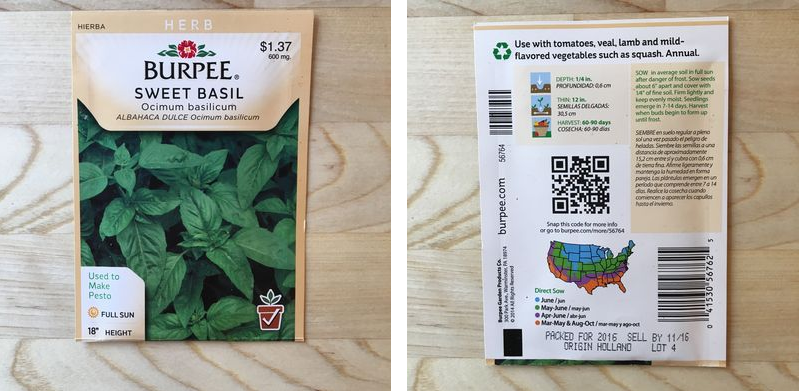
Basil will grow happily in a windowsill all summer long — and will sprout up as soon as just seven days after you plant it.Food52
Get yourself a pot, fill it with soil, pop basil or mint or dill or parsley seeds in according to the seed packet’s instructions, water thoroughly, and stick the pot in a sunny place. In about a week, you’ll have plant babies and the beginnings of a fine herb garden. Herbs tend to be very easy to grow! And a good opportunity to try your maybe-green-maybe-not thumbs at gardening.

